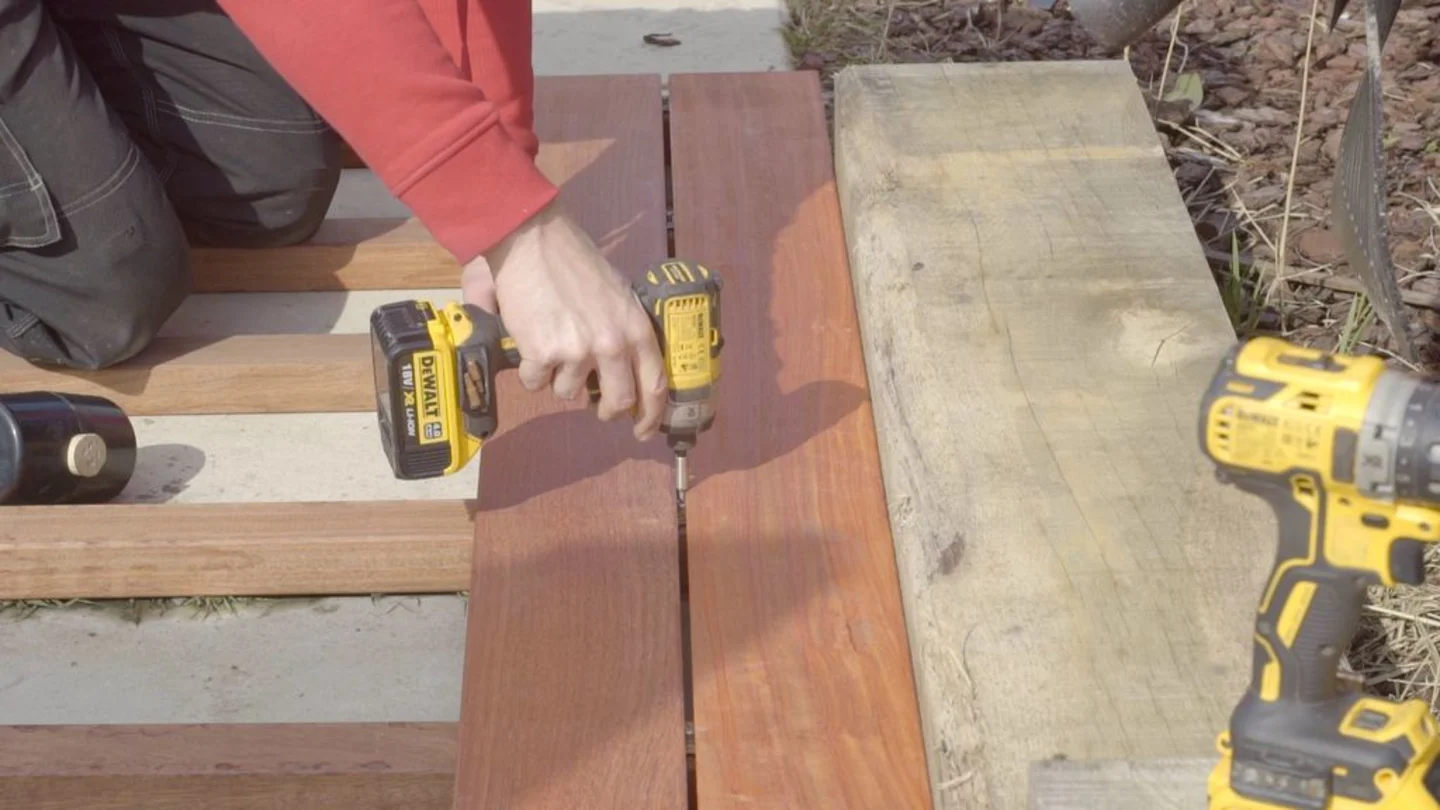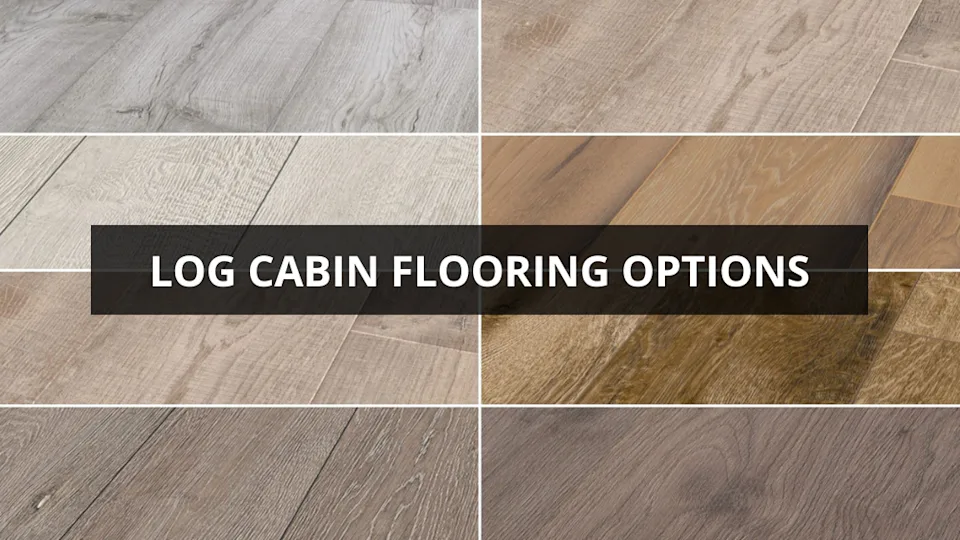Decking tiles
Transform your outdoor space with our versatile Decking Tiles. Our Decking Tiles category offers a wide range of high-quality tiles that effortlessly create beautiful and functional decks, patios, and balconies. Whether you're a DIY enthusiast or a professional contractor, our Decking Tiles provide a convenient solution for creating a stylish and durable space. And not just for garden decking areas, our composite range is a perfect compliment to our Log Cabins With Verandas.
7 products
Decking tiles by material
Choose from a variety of materials including composite and pressure treated timber to achieve the perfect look for your outdoor area. Whether you prefer the natural warmth of wood, the low-maintenance benefits of, our Decking Tiles collection offers options to suit every style and preference. If you're looking for a more traditional garden deck, we encourage you to explore our Full Decking Range.
With our Decking Tiles, you have the flexibility to create custom designs and easily reconfigure your outdoor space whenever you desire. Whether you're revamping a small balcony or transforming a large patio, our Decking Tiles offer endless possibilities for creating a personalised outdoor retreat. Shop now and start your deck transformation today! For everything you need for your decking project, browse through our Hardware Range.
Wood tiles
Timber is a beautiful product and suitable for many different purposes. With us, you will find a wide selection of wooden decking boards of many wood species. In our range, you can choose from, among others:
Pine or spruce decking boards
Larch or Douglas fir decking
Decking boards with clips
We deliver your wooden decking quickly throughout the Netherlands and Belgium. Complete your decking with floor beams, poles and various accessories. We will discuss the different types of decking below.
Composite tiles
Composite is a modern alternative to wood. The material consists of a combination of wood fibres and high-quality plastic. This composition makes for an eco-friendly material that retains the natural look of wood. A slight disadvantage of traditional wood may be that it requires a little more maintenance.
With composite, maintenance requires very little. Composite decking boards are made from wood fibres, so no logging takes place to make a composite decking board. The wood fibres come from FSC-certified companies. This makes composite a truly sustainable material.
Within our composite decking board range, we offer different types of boards with different qualities. For example, the co-extruded premium boards from Fiberdeck and Timmdek require even less maintenance than ordinary composite thanks to their special protective coating. The lifespan of composite is generally comparable to that of Ipé hardwood, namely 25+ years.
Assembling a decking
Below is a brief summary of our comprehensive DIY tip on making a decking. For more explanation and additional tips & tricks, please read the full DIY tip.
Preparation: Make sure you have the right supplies and come up with a good garden design
Sand bed: If necessary, excavate about 20 centimetres of soil under your deck. You can cover the first 10 cm with white sand. Make sure the sand is level.
Lay out posts: Place the posts 40 or 50 centimetres apart and place the beams 40 cm apart from each other. For a decking with 18 or 19 mm boards, place your beams a maximum of 30 cm apart.
(If necessary) Lay anti-root fabric: Anti-root fabric ensures that weeds will not grow between your floor boards. Make sure you place your anti-root cloth about 10 cm below joists so that your decking can ventilate properly.
Assemble beams: Always mount the joists/dwarves on the side of your posts for more strength.
Installing deck boards: Lay the first plank about 2 centimetres from the wall and lay the rest of the decking boards in the desired position.
Screw down decking boards: Do you have hardwood decking boards? If so, pre-drill the decking screws.
Sweep decking: Wipe all splinters and all dirt off your decking before putting the garden furniture on it.
Finish decking: Cut off any joists and boards that are too long. Finish the side of your deck with a standing board or a special edging board. This will give a nice look to your decking.

Decking Ideas
When choosing the right decking, the design is very important. Within our range, the following colours are very popular: warm brown, very light brown and natural grey. These beautiful shades offer many different possibilities for creating a certain atmosphere in your garden. You can choose between natural wood colours for a timeless look or, on the contrary, lively coloured decking boards to create a modern atmosphere.
You can choose to put different colours of decking boards in your decking. This gives a playful effect and is becoming increasingly popular. In fact, this way you create more depth in your garden. Edge finishes are also ideal for making your decking really special. Straight edge or red edge, something for everyone. You can also place a board on the sides of your decking to close off the space between the supports and the boards.
For a seamless finish, it is best to use finishing profiles and clips. These provide a calm look and also improve the durability of your wooden decking! You can also consider upgrading your decking with our decking accessories such as lighting, planters and railings.
Tile decking patterns
Decking patterns refer to the different ways in which the decking boards are arranged or laid out on a deck surface. There are several popular decking patterns, including:
Straight or parallel: This is the most common decking pattern, where the boards are laid parallel to each other in straight lines.
Diagonal: In this pattern, the decking boards are placed at a 45-degree angle to the joists, creating a diagonal pattern across the deck surface.
Herringbone: This pattern involves arranging the boards in a zigzag or herringbone pattern, creating a visually appealing design.
Chevron: Similar to the herringbone pattern, the chevron pattern involves placing the boards in a V-shape, with each board meeting at a point in the center.
Picture frame: In this pattern, a border of contrasting boards is placed around the perimeter of the deck, while the inner section is filled with parallel or diagonal boards.
Random: This pattern involves laying the decking boards randomly, without following a specific pattern. This can create a more natural and organic look.
These are just a few examples of the many decking patterns available. The choice of pattern often depends on personal preference, the style of the deck, and the desired aesthetic.
Aftercare and maintenance
It is wise to treat wooden decking boards with a special hardwood oil. In colder periods, it is important to sweep the decking boards regularly with a broom to prevent algae formation.
To ensure that your decking remains in top condition for as long as possible, careful maintenance is essential. Here are our tips for maintaining your decking.
Daily cleaning: Use a hard broom or brush to remove superficial dirt such as leaves from your decking. Consider regular light scrubbing with warm water and possibly green soap. However, we do not recommend using chemicals in your garden.
Treating stains and scratches: by sanding with fine sandpaper in the direction of the wood grain, you can easily reduce and sometimes even remedy light scratches. Stains can be removed with a soft cloth and mild detergent.
Fight mould and mildew: first of all, make sure the room is well ventilated. In this way, you prevent moisture accumulation. Should mould or mildew nevertheless develop here and there; use a fungicide and follow the instructions on the packaging.
Protective coatings: even though the boards are of very high quality, moisture can always cause (slight) damage to your decking boards. Using a protective sealer will give your decking extra protection against unexpected weather conditions.
Periodically, for example annually, apply a wood oil or stain oil to your decking. This will nourish your decking. This step does not apply if you have a composite decking.

FAQs About Decking Tiles
What are the average costs of decking per m² in UK?
The cost of decking a square meter of garden in the UK can vary widely depending on the materials used and whether you hire professionals or opt for a DIY approach. Here's a detailed breakdown:
Material Costs:
Softwood Decking
: Typically costs between £16 to £20 per square meter. This is the most affordable option but requires regular maintenance to prevent rot and wear.
Hardwood Decking
: More durable than softwood, costing around £33 per square meter. It is low-maintenance and long-lasting but more expensive.
Composite Decking
: Ranges from £80 to £160 per square meter. It is a blend of wood and plastic, offering durability with low maintenance.
PVC Decking
: Costs between £30 to £80 per square meter. It is entirely plastic, easy to maintain, and weather-resistant but may have a less natural appearance.
Aluminium Decking
: Priced between £40 to £90 per square meter. It is durable and slip-resistant, ideal for all weather conditions but on the higher end of the price spectrum.
Labour Costs:
The cost of labour can significantly affect the overall price. Professional installation typically costs:
Low-end installation: £20 per square meter
Average installation: £33 per square meter
High-end installation: £50 per square meter
Additional Costs:
Other factors such as the complexity of the terrain, the need for a base structure, and additional features like balustrades and lighting can increase the total cost.
Regular maintenance costs, especially for timber decking, include treatments, cleaning, and occasional repairs
Overall, for a standard installation of composite decking by professionals, you could expect to pay between £90 and £110 per square meter, inclusive of materials and labour. For a more budget-friendly option, softwood decking installed by professionals would be around £50 per square meter.
For precise estimates, considering the specific conditions of your garden and your material preferences, getting quotes from local tradesmen is recommended.
Conclusion
Decking tiles are a versatile and stylish solution for transforming your outdoor space. With their easy installation, durability, and design flexibility, they offer a practical and cost-effective way to upgrade your patio, balcony, or terrace. Whether you prefer a natural wood look, a contemporary finish, or a Mediterranean-inspired vibe, there is a decking tile option to suit your style and taste. By following proper installation and maintenance guidelines, you can enjoy a beautiful and inviting outdoor area for years to come. So why wait? Start exploring the world of decking tiles and turn your outdoor dreams into reality!










